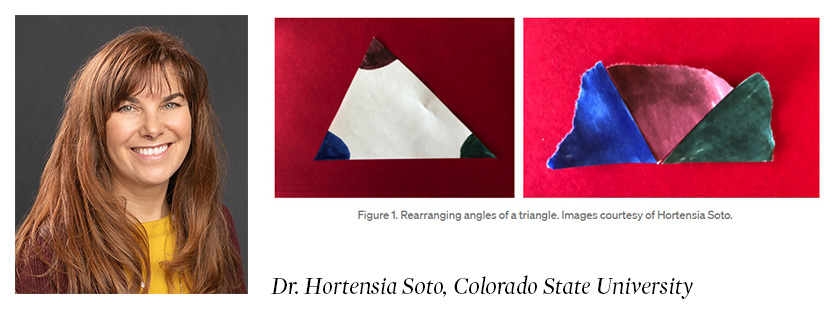
This spring’s issue of the Math Circular is full of novel approaches that will challenge your thinking of what a Math Circle can and should be! Check it out at https://medium.com/math-circular.
Feeling the Angle Sum of a Triangle: An Introduction to Embodied Learning in Mathematics
by Hortensia Soto, Professor of Mathematics at Colorado State University and Associate Secretary of the Mathematical Association of America (MAA) and the upcoming President-Elect of the MAA (and native Nebraskan and past UNL NMSSI instructor)
Learning and the Senses
Growing up, my mom used to say “usen sus cinco sentidos” (use your five senses) when she wanted us kids to use reason or to behave in a logical manner. This phrase gained new meaning for me when I discovered embodied learning, which is a philosophy that claims that learning occurs when the meaning of what is learned is grounded in body movement (action), perception, and sensation. As such, those of us who follow this philosophy of learning create learning environments where learners engage in seeing, hearing, and feeling — three of the five senses. Let’s see what this looks like.
Walking the Sides and Angles of a Triangle
In elementary or middle school, students may discover that the sum of the interior angles of a Euclidean triangle is 180 degrees by drawing a triangle, measuring each angle, and summing up their angles to obtain something that is approximately 180 degrees. The students might also draw a triangle, color the angles different colors, tear the angles, and line them up to illustrate that the angles create a straight line, which has a measure of 180 degrees as shown in Figure 1.
Read more:
https://medium.com/math-circular/feeling-the-angle-sum-of-a-triangle-c9a3e654df3f